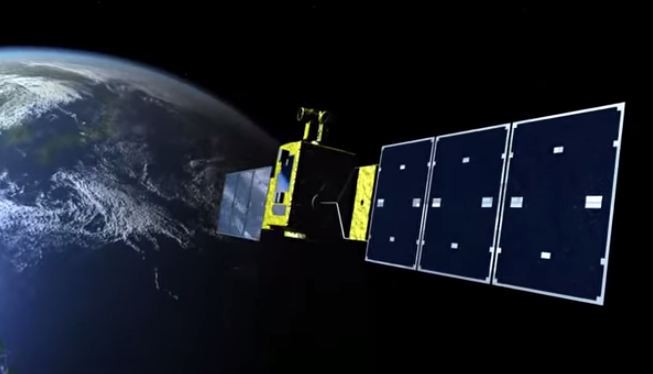A modest Japanese experiment has offered conclusive proof of a radical concept that could one day see fleets of orbiting satellites turn solar power into enough electricity to power all of Japan -- and probably the world.
The Japan Aerospace Exploration Agency or JAXA has announced the successful wireless transmission of electric energy using microwaves in a groundbreaking experiment.
JAXA said Japanese researchers successfully converted 1.8 kilowatts of electric power into microwaves and accurately transmitted the energy to a receiver located 55 meters away.
While the distance isn't that large, JAXA said it can improve the technology to beam energy farther away. Ultimately, the goal will be to provide clean energy gathered by a satellite fleet to locations around the globe.
JAXA said this breakthrough technology could soon allow the development of a space-based solar power source provided by fleets of special "solar power satellites".
The Space Solar Power System or SSPS is Japan's name for its technology to generate solar power from satellites in geostationary orbit and transmit this power to Earth. JAXA is engaging in research on this system. JAXA introduced the SSPS concept nearly five years ago.
JAXA said energy generated by the satellites will be converted into "gentle laser beams" and microwaves for safe transmission to facilities on the ground. The microwave transmissions will be so safe birds can fly though them without injury.
The Japanese believe using solar power in space is more efficient than gathering solar power on the ground as is the conventional method. In space, the sun doesn't set, allowing continuous collection of solar power and its conversion to energy.
JAXA believes that with enough solar power satellites, SSPS could power all of Japan and even the entire world.
It said SSPS will see the launch of a fleet of solar power satellites equipped with solar panels. These satellites will carry microwave-transmitting equipment capable to delivering energy to multiple recipients on the ground.
JAXA said it's looking to place these solar power satellites in a geosynchronous orbit 36,000 kilometers above the Earth's surface.



























